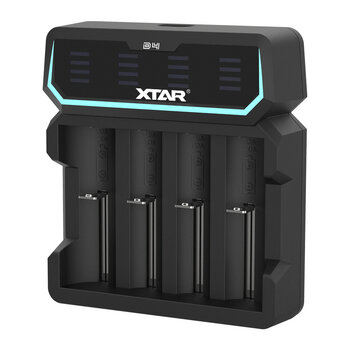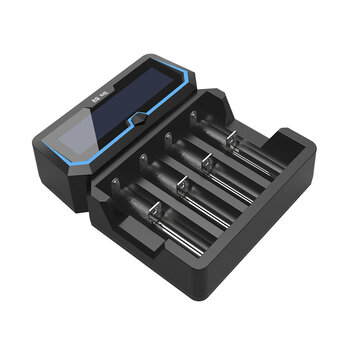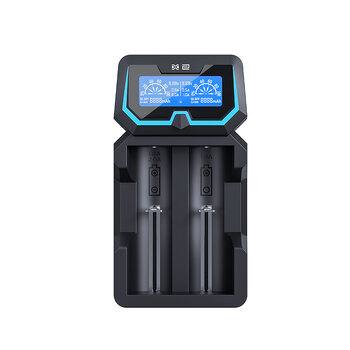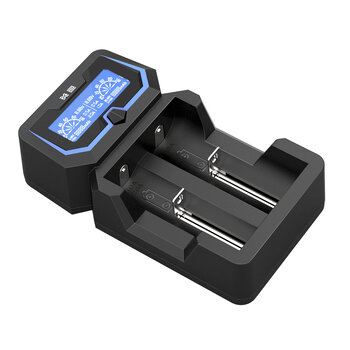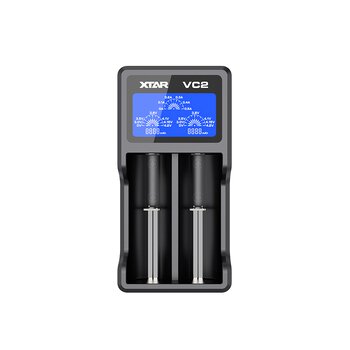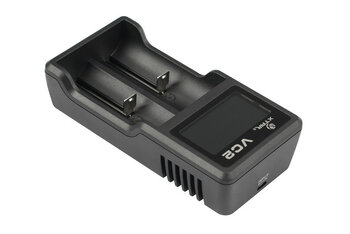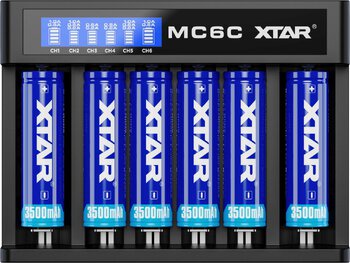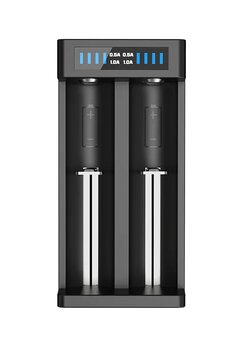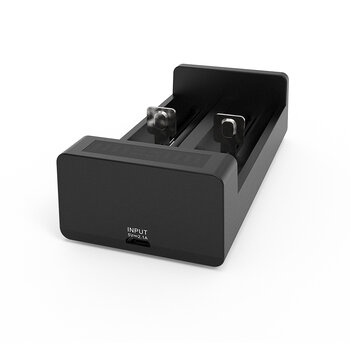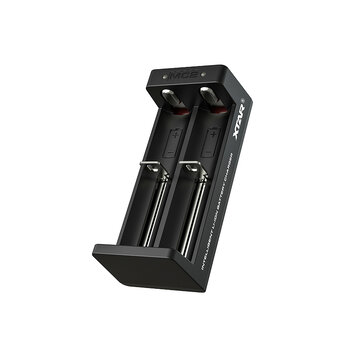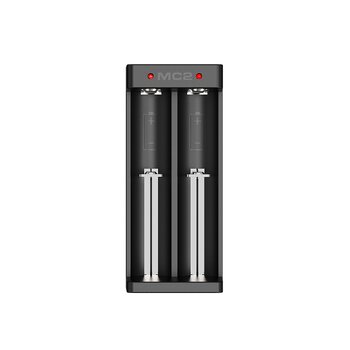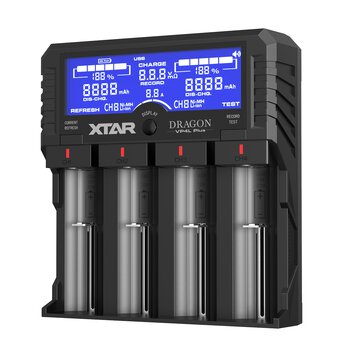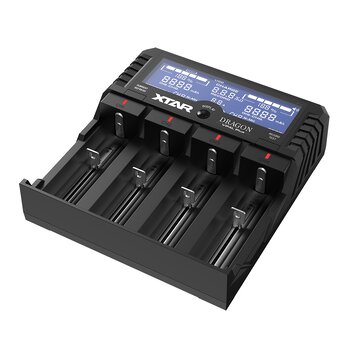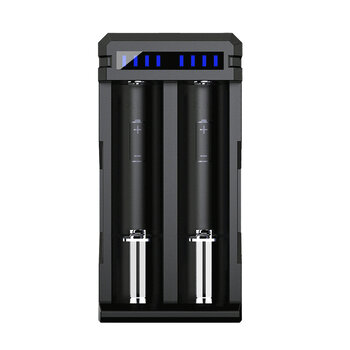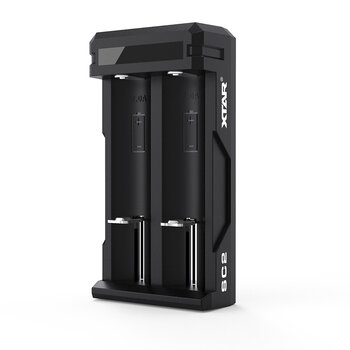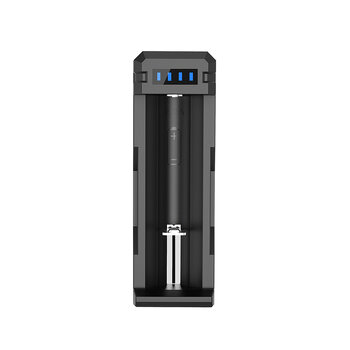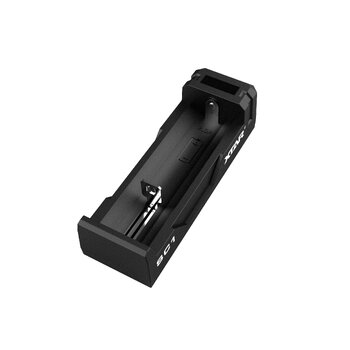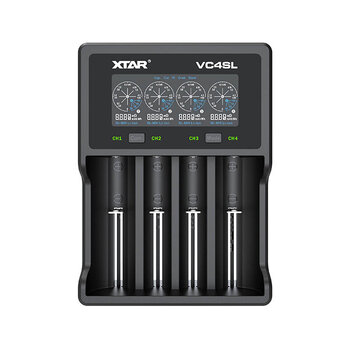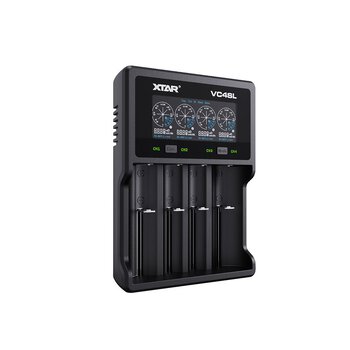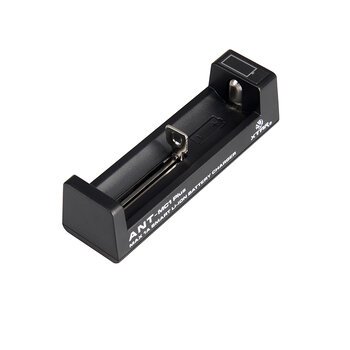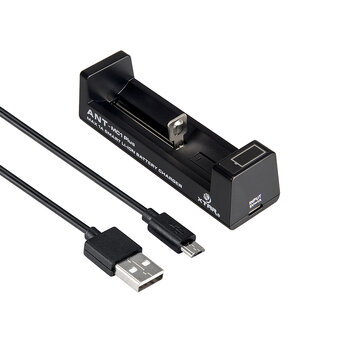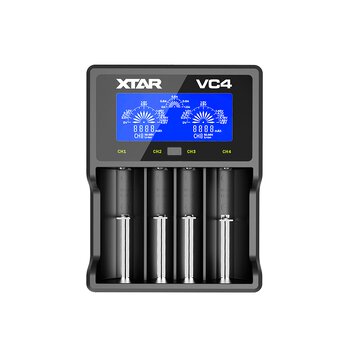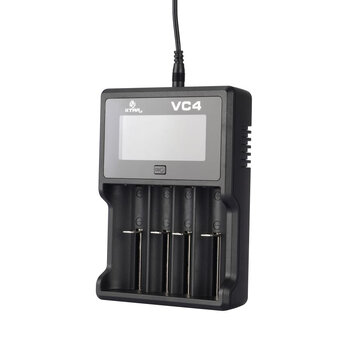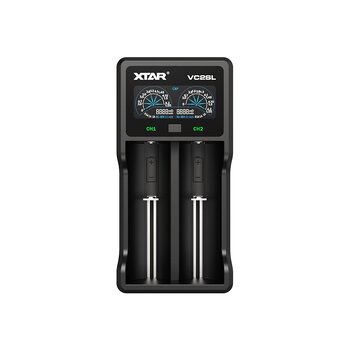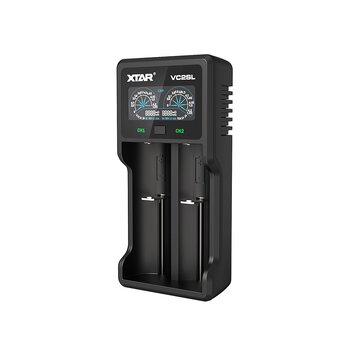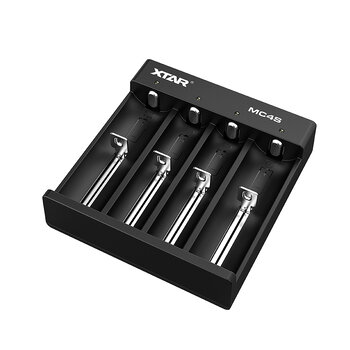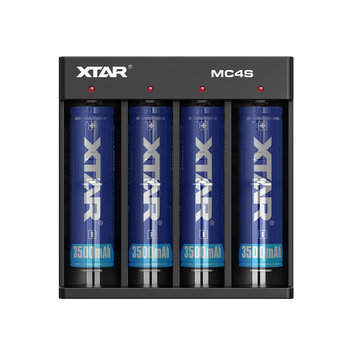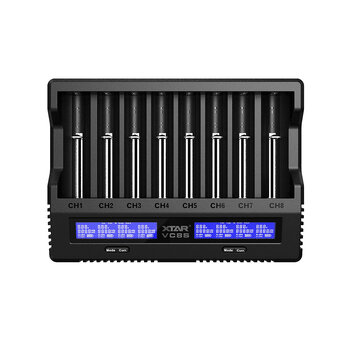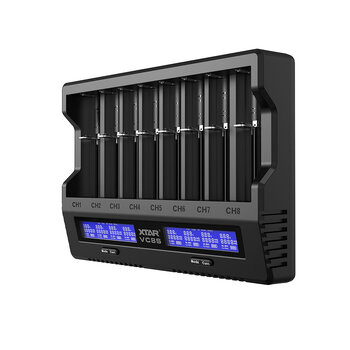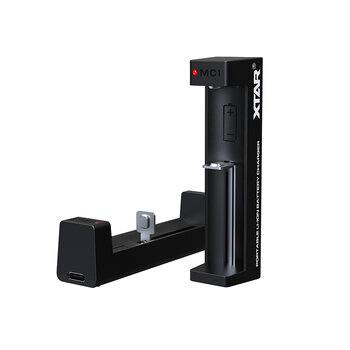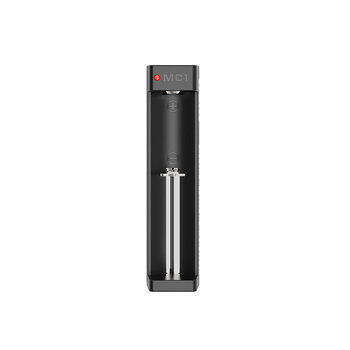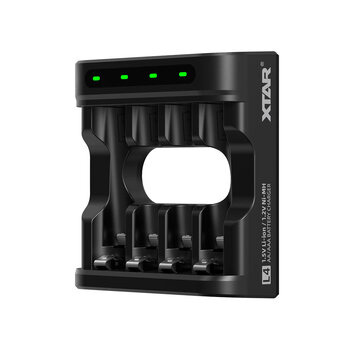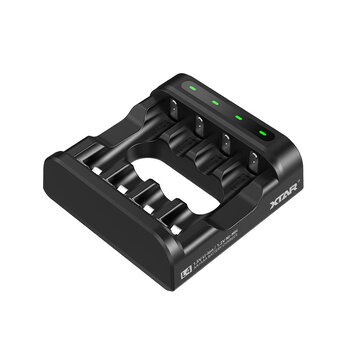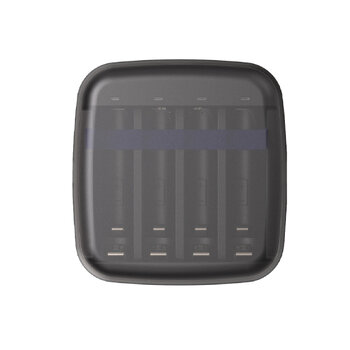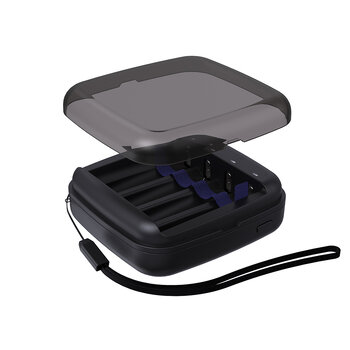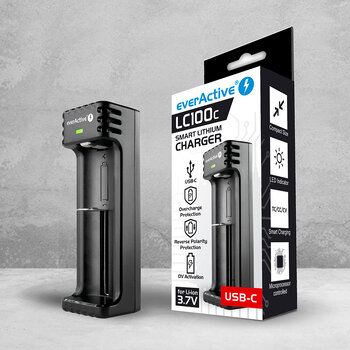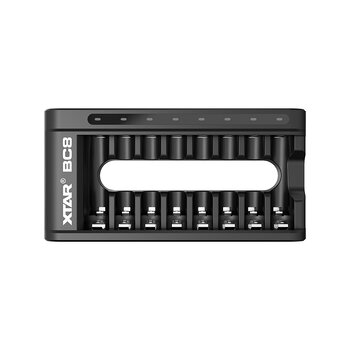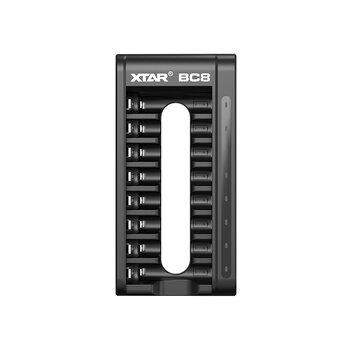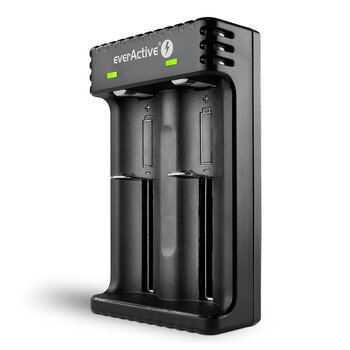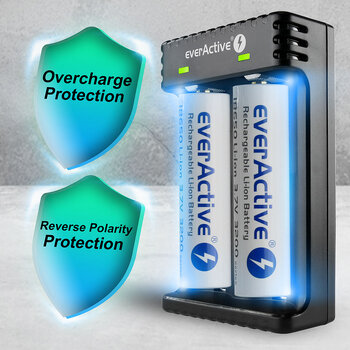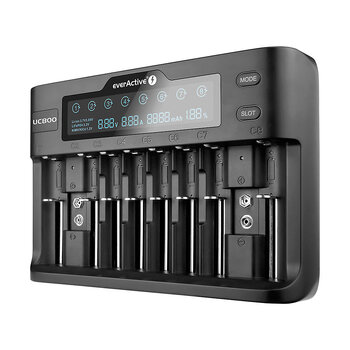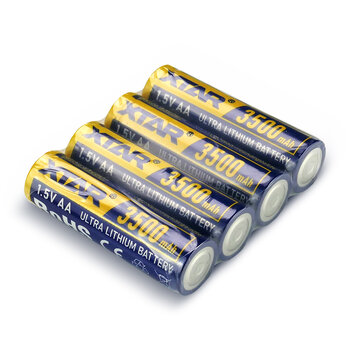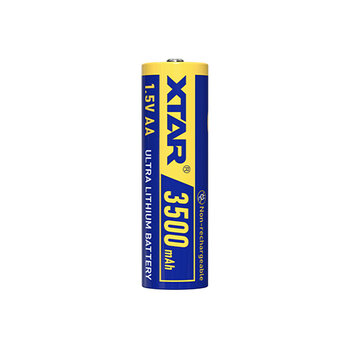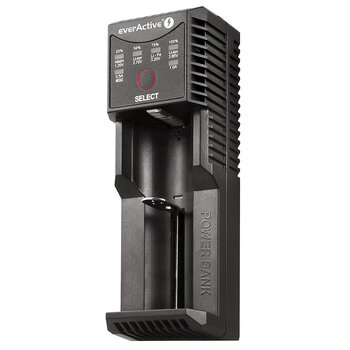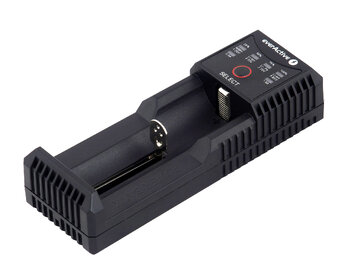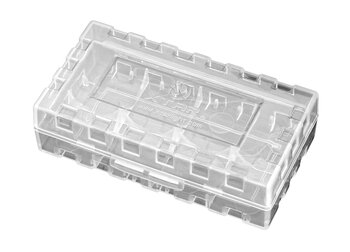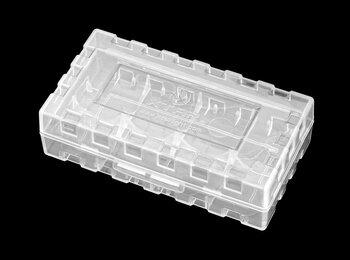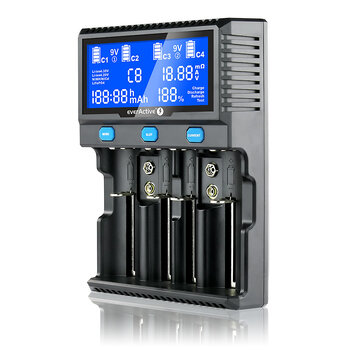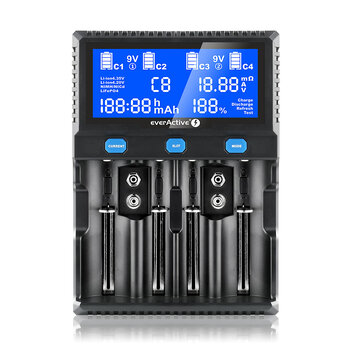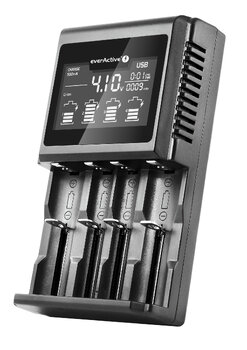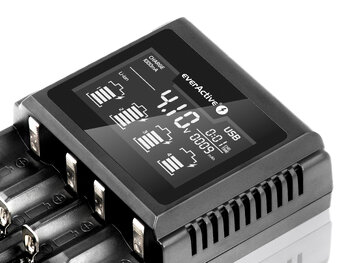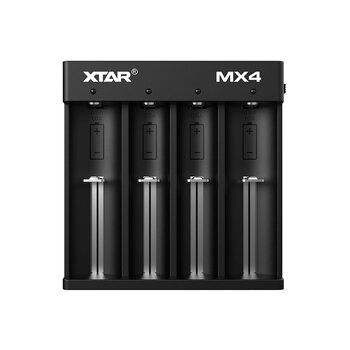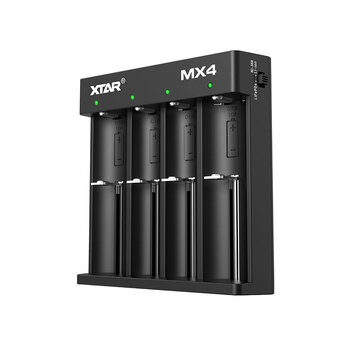Professional Compact Processor Loader
Xtar D4
For Li-ion batteries in 18650 sizes and other
• Automatic charging current 2x2A/4x1A/2x0, 5A (CH2 & CH3) + 2x1A • Four independent charging channels • Powered by 230V mains (cable included) • Compact size-Easy to carry • Reactivation function of deeply discharged cells • Protection: Short-circuit, thermal, reverse polarity |
In a small enclosure, a fully professional processor loader with a three-stage charging process TC/CC/CVis concealed. It loads 3.6/3.7 v Li-ion cells with any capacity in sizes 14500, 14650, 16340, 17335, 17500, 17670, 18350, 18500, 18650, 18700, 20700, 21700, 22650, 26650.
What Is THE TC/CC/CV charging method? It is a three-step process of loading Li-ion cells to keep the cell in good condition by charging the right current at each stage and completing the charging process at the right moment.
The various stages of the TC/CC/CV process are:
• TC phase: Cells discharged below 2, 9V are ' awake ' to lower currents.
• CC phase: When 2, 9V is reached, the cell is loaded with a constant current of 2x2A/4x1A/2x0, 5A (CH2 & CH3) + 2x1A.
• CV phase: When the cell is already nearly charged, the charger switches to a decreasing current charge until it reaches a voltage of 4, 2V on the cell. After reaching 4, 2V the charging process is complete-the battery is fully charged.
Batteries with a voltage of 4, 1V or higher are treated by the charger as charged. To recharge such a full battery, please insert it into the charger before powering it in. When left in the charger, the charged batteries will be subjected to a natural self-discharge process. Charging will resume when the battery voltage drops below 4, 1V.
The Xtar D4 Charger has a function of reactivating deeply discharged cells and cells with a Voltage Of 0v. Many chargers on the market are not able to charge such batteries. Here with the help comes the charger Xtar D4, which in many cases allows you to ' resave ' such cells. Just insert a deeply discharged battery into the D4 charger, as with normal charging, the charger detects the unloaded link and attempts to reactivate it. Attention! Cells unloaded below a certain level are irreversible and reactivated may not be possible. Avoid too deep discharge of Li-ion batteries-this can lead to a significant reduction in their durability and capacity or to their total malfunction.
Chargers from other manufacturers can significantly increase the temperature of the cells being charged during charging. Excessive heating of the cells can cause them to wear more quickly. When designing a D4 loader, Xtar went one step further from the competition, solving this problem easily: the power supply from an external power supply was applied. This ensures that the temperature of the D4 rechargeable battery rises by up to 15 degrees.
Complete with Xtar D4 charger, we get a cable 230v network cable.
| Da |
Input current
In the CC phase
Loading
Short Circuit
Before the battery is reversed
2-pin cable so-called. Osómka
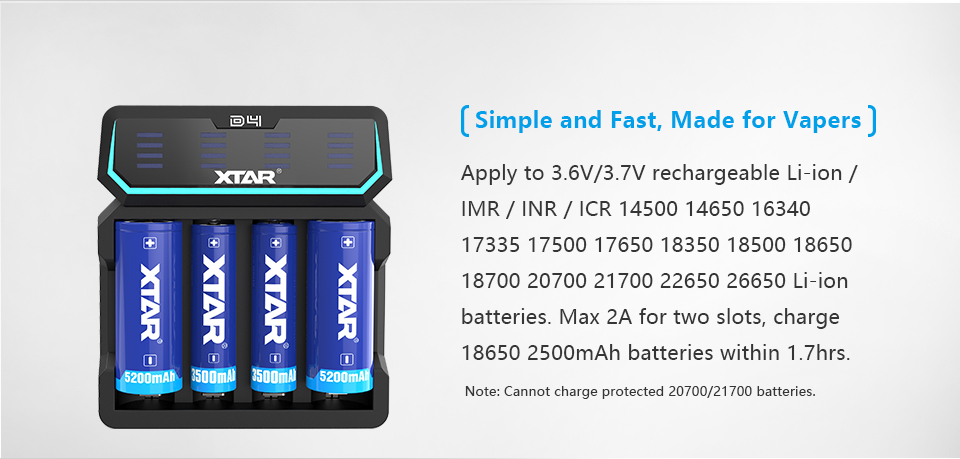
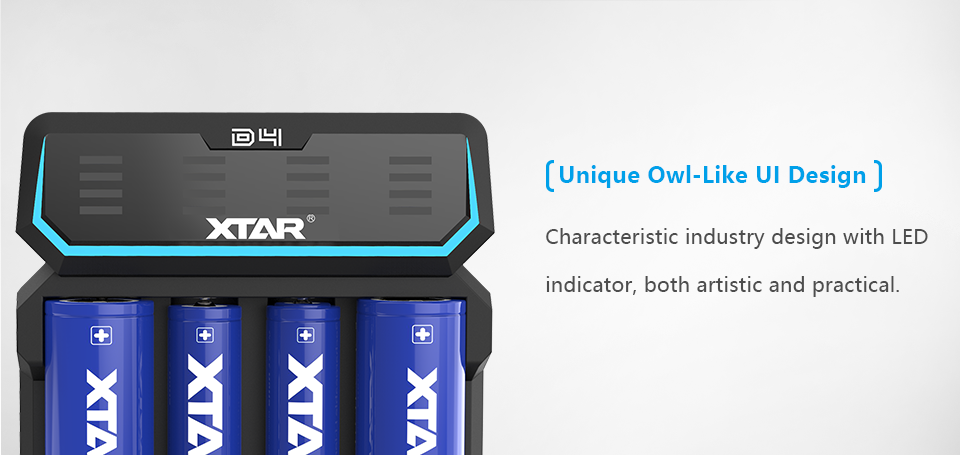
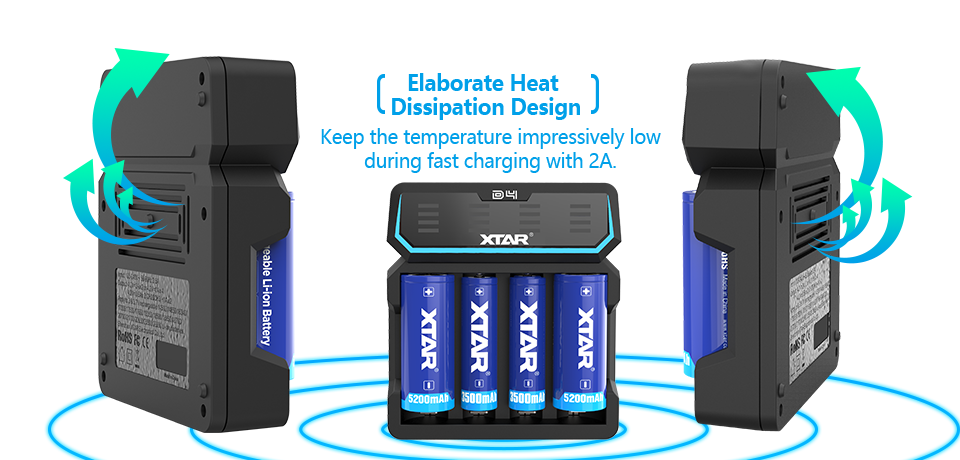
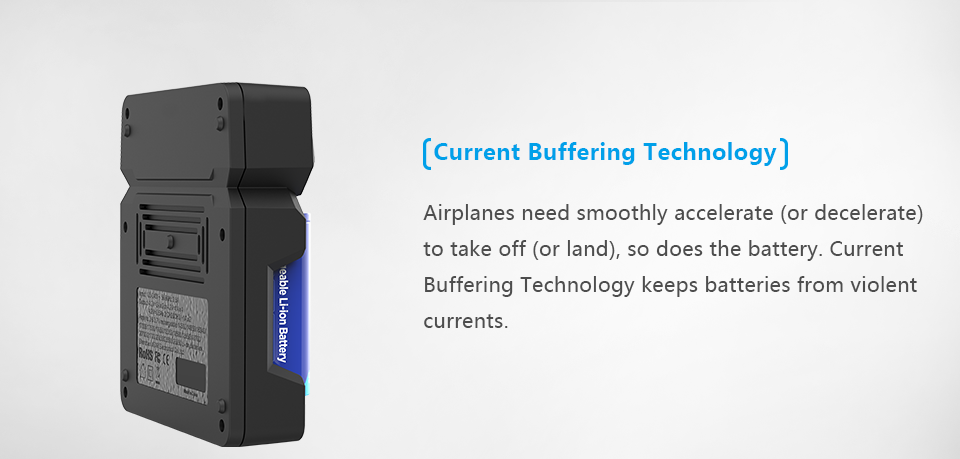
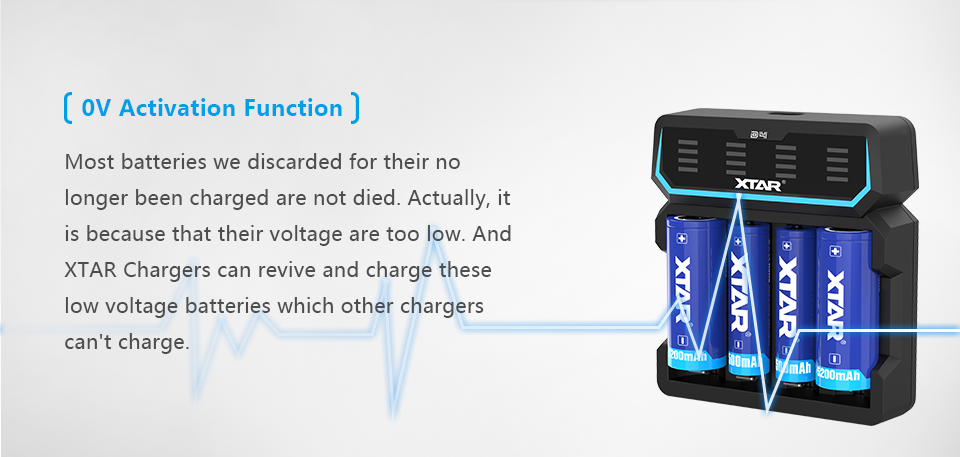
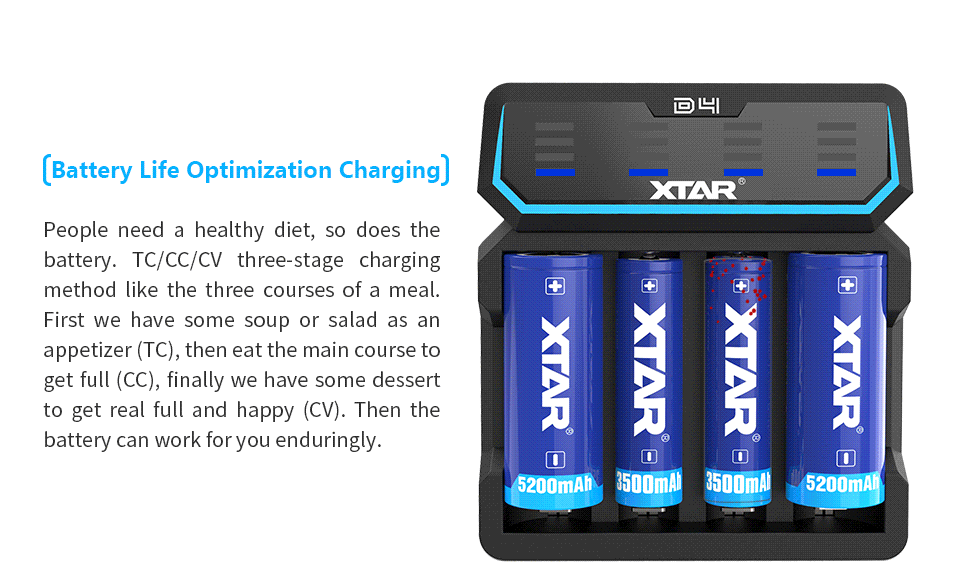
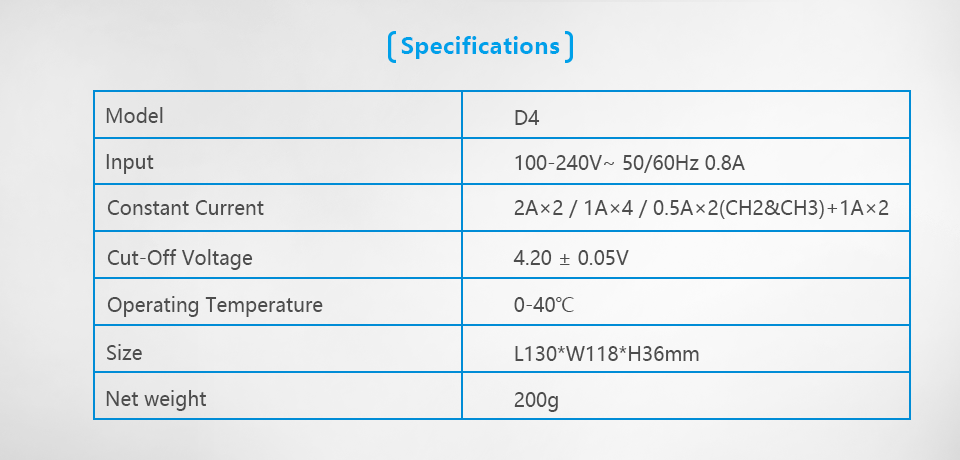
- Li-ion batteries 3.6-3.7V, unprotected
- Li-ion batteries 3.6-3.7V, protected (with PCM/PCB)
- AC 100-240V, 50-60Hz(0,8 A)
- Processor-controlled TC/CC/CV for Li-ion
- 2x2A / 4x1A / 2x0.5A (CH2&CH3) + 2x1A
- 4.2V ±0.05V
- Reactivation of deeply discharged cells and 0V cells
- Before the charger overheats
- Against overload / short circuit
- Before reverse polarity of cells
- Charge
- D4 Charger
- 2-pin cable, so-called figure eight
- Li-ion batteries 3.6-3.7V, unprotected
- Li-ion batteries 3.6-3.7V, protected (with PCM/PCB)
- AC 100-240V, 50-60Hz(0,8 A)
- Processor-controlled TC/CC/CV for Li-ion
- 2x2A / 4x1A / 2x0.5A (CH2&CH3) + 2x1A
- 4.2V ±0.05V
- Reactivation of deeply discharged cells and 0V cells
- Before the charger overheats
- Against overload / short circuit
- Before reverse polarity of cells
- Charge
- D4 Charger
- 2-pin cable, so-called figure eight
5th Floor, No.77 Xinhe Rd, Shangmugu
518000 Shenzhen
Chiny
Email: info@xtar.cc
Telephone: (+86) 755-25507076
Geodetów 24
80-298 Gdańsk
Polska
Email: contact@baltrade.eu
Telephone: 58 552 20 20
